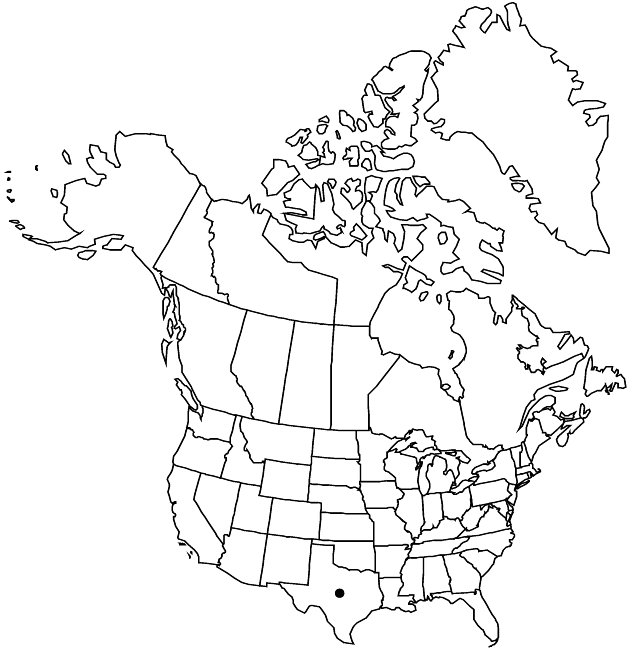Perityle warnockii
Sida 3: 177, fig. 1. 1966.
Perennials or subshrubs, 2–10 cm; densely scabrous-pubescent. Leaves: petioles 2–5 (–8) mm; blades lanceovate, ovate, or suborbiculate, 6–10 × 4–8 (–10) mm, margins serrate. Heads borne singly (often partially obscured by leaves), 7–10 × 4–7 mm. Peduncles 1–7 mm. Involucres campanulate. Phyllaries 9–10, linear to lanceolate, 5–7 × 1.2–2.2 mm. Ray-florets 0. Disc-florets 9–12; corollas bright white, tubes 0.6–1 mm, throats subfunnelform, 2–2.5 mm, lobes 1–1.6 mm. Cypselae oblong to oblanceolate, 2.2–2.8 mm, margins notably calloused, glabrous; pappi callous crowns, bristles 0.2n = 34.
Phenology: Flowering spring–fall.
Habitat: Limestone
Elevation: 500–700 m
Discussion
Of conservation concern.
Perityle warnockii is known only from the type locality in Val Verde County. The relationship of P. warnockii to P. bisetosa is evidenced by its similar though often reduced vegetative and floral morphology. The two species may have been derived separately from a common ancestor, perhaps a white-flowered member of sect. Pappothrix such as P. vitreomontana.
Selected References
None.
